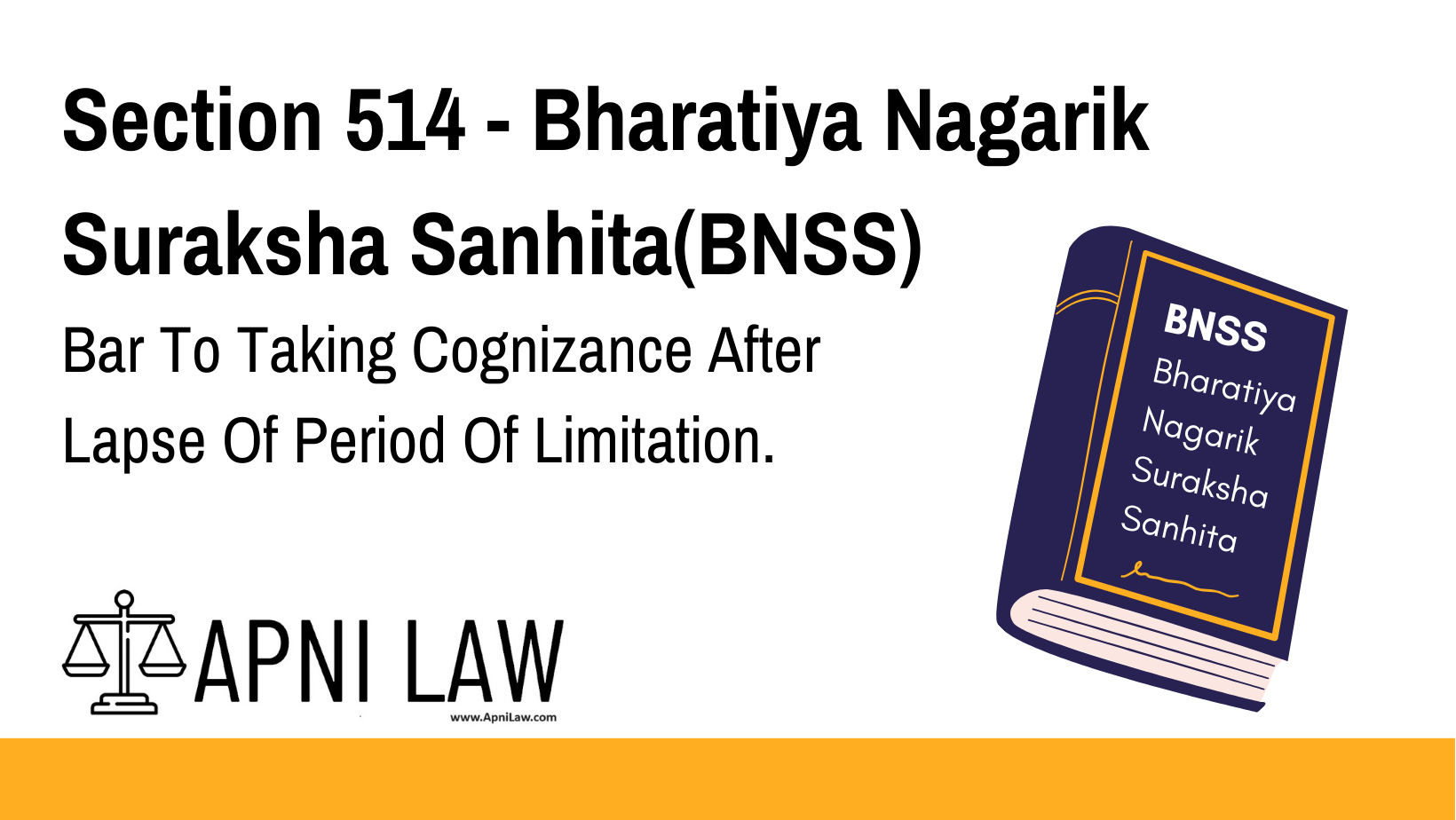Code: Section 514 BNSS
(1) Except as otherwise provided in this Sanhita, no Court shall take cognizance
of an offence of the category specified in sub-section (2), after the expiry of the period of
limitation.
(2) The period of limitation shall be—
(a) six months, if the offence is punishable with fine only;
(b) one year, if the offence is punishable with imprisonment for a term not
exceeding one year;
(c) three years, if the offence is punishable with imprisonment for a term
exceeding one year but not exceeding three years.
(3) For the purposes of this section, the period of limitation, in relation to offences
which may be tried together, shall be determined with reference to the offence which is
punishable with the more severe punishment or, as the case may be, the most severe
punishment.
Explanation.—For the purpose of computing the period of limitation, the relevant
date shall be the date of filing complaint under section 223 or the date of recording of
information under section 173.
Explanation of Section 514 BNSS
Section 514 of the BNSS sets forth the rules regarding the “bar to taking cognizance” of offences after a certain period of limitation has elapsed. Here’s a breakdown of its key components:
- No Cognizance After Limitation Period:
Courts cannot initiate legal proceedings for an offence if the specified time period has passed, unless exceptions apply as mentioned in the Sanhita. - Time Limits Based on Offence Severity:
The period of limitation varies based on the punishment prescribed for the offence:- 6 months for offences punishable with a fine only.
- 1 year for offences punishable with imprisonment up to 1 year.
- 3 years for offences punishable with imprisonment over 1 year but up to 3 years.
- Cognizance for Multiple Offences:
If multiple offences are involved, the limitation period is determined based on the most severe punishment. - Relevant Date for Calculation:
The limitation period begins from the date of either:- Filing of the complaint under Section 223, or
- Recording of information under Section 173.
Illustration
Example 1: Offence Punishable by Fine Only
A person is charged with littering in a public place, punishable with a fine of ₹500. The complaint is filed on January 1, 2023.
- The period of limitation is 6 months.
- Therefore, the Court can take cognizance until July 1, 2023.
Example 2: Multiple Offences Involving Different Punishments
A person is charged with theft (punishable with 2 years imprisonment) and using abusive language (punishable with 6 months imprisonment).
- The limitation period will be 3 years (based on the theft offence, which has a more severe punishment).
Example 3: Complaint Filed After Limitation Period
A complaint for cheating (punishable with 3 years imprisonment) is filed on January 1, 2019, but the Court takes cognizance on January 2, 2023.
- Since the 3-year limitation period has expired, the Court cannot take cognizance unless an exception applies.
Common Questions and Answers on Section 514 BNSS
1. What is the period of limitation for taking cognizance of an offence?
- Answer: The period varies based on the offence:
- 6 months for offences punishable with fine only.
- 1 year for imprisonment up to 1 year.
- 3 years for imprisonment between 1 to 3 years.
2. Does the limitation period apply to all types of offences?
- Answer: No, it applies only to offences specified in sub-section (2) and exceptions provided in the BNSS.
3. What happens if I file a complaint after the limitation period?
- Answer: The Court will not take cognizance unless an exception applies, such as fraud, concealment, or other valid reasons.
4. How is the limitation period calculated for multiple offences?
- Answer: It is determined based on the offence with the most severe punishment.
Conclusion
Section 514 of the BNSS emphasizes the importance of timely legal action. It provides a clear framework for when legal proceedings must be initiated, ensuring that justice is served within reasonable time limits while also protecting individuals from being prosecuted after unjustified delays.








